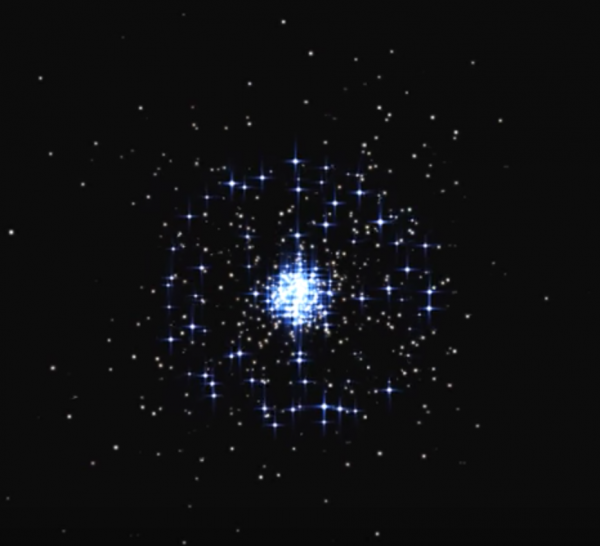By Vishal Goel, | January 31, 2017

Blue straggler stars
Blue straggler stars are blue, bright stars, with a higher mass than the average for a cluster, and they are expected to sink towards the centre of a star cluster over time.
Those closest to the cluster core are the first to migrate inwards, with more distant blue stragglers progressively moving inwards over time.
Like Us on Facebook
India's first dedicated space observatory ASTROSAT has captured the rare phenomenon of a small, 6-billion-year-old star "preying" on a bigger celestial body. Scientists say the star, also called a "blue straggler", is getting bigger, hotter and bluer by sucking in the bigger celestial body's mass and energy, leading to its eventual death.
Annapurni Subramaniam, a professor at the Indian Institute of Astrophysics, said that the most popular explanation of the phenomenon is that this is a binary system in which the smaller star sucks the material out of the bigger companion star to become a blue straggler.
This is why the smaller star is also called a "vampire star". She added to her statement by saying that the small star becomes bigger, hotter and bluer giving it an appearance of being young, while the ageing companion star burns out and collapses into a stellar remnant.
Reportedly, this phenomenon is not anything new observed by the scientists. However, the observation of the entire phenomenon through a telescope is a good way for scientists to study formation of the "blue straggler" stars, reports Financial Express.
Additionally, the discovery also highlights the capabilities of the telescopes on ASTROSAT, a dedicated space observatory satellite launched in September 2015.
Further, the scientists are now trying to understand the chemical composition of the "blue straggler" with the help of high resolution spectroscopy, which could reveal more about the evolution of these celestial objects.
The stars are part of a "cluster" called NGC 188 which, according to an Indian news website, formed around six billion years ago, and are thus much older than the sun (believed to have come into existence nearly 4.5 billion years ago).
The study was recently published in Astrophysical Journal Letters by a team of scientists from IIA, Inter-University Centre of Astronomy and Astrophysics (IUCAA), Tata Institute of Fundamental Research (TIFR), Indian Space Research Organisation (ISRO) and the Canadian Space Agency (CSA).
-
Use of Coronavirus Pandemic Drones Raises Privacy Concerns: Drones Spread Fear, Local Officials Say

-
Coronavirus Hampers The Delivery Of Lockheed Martin F-35 Stealth Fighters For 2020

-
Instagram Speeds Up Plans to Add Account Memorialization Feature Due to COVID-19 Deaths

-
NASA: Perseverance Plans to Bring 'Mars Rock' to Earth in 2031

-
600 Dead And 3,000 In The Hospital as Iranians Believed Drinking High-Concentrations of Alcohol Can Cure The Coronavirus

-
600 Dead And 3,000 In The Hospital as Iranians Believed Drinking High-Concentrations of Alcohol Can Cure The Coronavirus

-
COVID-19: Doctors, Nurses Use Virtual Reality to Learn New Skills in Treating Coronavirus Patients











